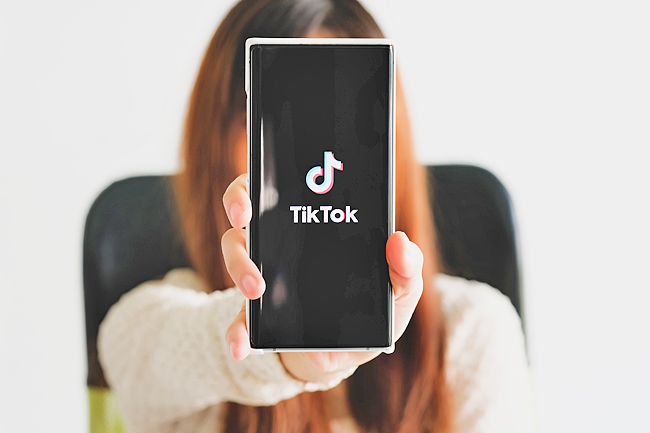Ludwig Tan & Brian Lee
CNA – When Melanie, a colleague of ours, met her students in person for the first time after Singapore reverted to DORSCON Green in February, she was surprised to see some of her Gen Z students use TikTok or Instagram for research in their class group discussions.
Just before the COVID-19 pandemic, Google was still her students’ best friend.
Melanie’s observation mirrors a recent study by Google of Gen Z Internet users, who are born roughly between the late 1990s and early 2010s.
Admitting that Gen Zers have forsaken Google’s search engine in favour of apps like TikTok or Instagram, Google’s senior vice president Prabhakar Raghavan noted that younger users are now more interested in “visually rich” forms of search and discovery.
THE EIGHT-SECOND ATTENTION SPAN
Gen Zers are true-blue digital natives who have been surrounded by the Internet, mobile devices and social media since they were born. Processing multimedia and short videos with special effects is second nature to them; it is unsurprising that their preferred information sources tend to be visually rich.
As humanities and behavioural science educators, we have noticed that our Gen Z students favour learning materials that combine appealing visuals, music, text, and other special effects.
This type of attention-grabbing and entertaining multimedia approach makes the learning process more enjoyable for them. TikTok short videos, ranging from 15 to 60 seconds, appeal to them, whereas traditional, text-based sources struggle to capture their attention and imagination.

Growing up in the digital age may have had a profound impact on Gen Z’s attention span too.
A study by Microsoft in 2015 found that after the arrival of social media, the average human attention span had shrunk to eight seconds in 2013, down from 12 seconds in 2000.
Marketing communication strategists who find it challenging to reach out to the younger generation have lamented that Gen Z’s ability to focus is even weaker than that of a goldfish, which is notoriously reputed to have an attention span of nine seconds.
TikTok’s bite-sized content offers Gen Z the perfect answer, in line with their need for instant gratification. In addition, TikTok is known for its high levels of engagement, thanks to its powerful algorithm, which decides how the content is served to users.
With its personalised feeds of short videos set to music and sound effects, TikTok caters to Gen Z’s desire for constant stimulation too. TikTok’s algorithm has, in a way, further enhanced users’ penchant for selective exposure, a tendency to favour information which reinforces their pre-existing views while avoiding contradictory information.
INSTANT INSTA
For the same reasons, Gen Zers are drawn to the engaging and visually stimulating content that Instagram offers. Peer influence could be another reason why Gen Zers are attracted to Instagram.
Instagram, which allows posts to be edited with filters and categorised using hashtags, has emerged as one of the most popular social media platforms among Gen Zers, many of whom have migrated from Facebook to share trends and information with their friends and the online community on Instagram.
One of our earlier studies on the impact of social media on youth in Singapore suggested that peers play a vital role in young people’s social media behaviours.
We found that young people often seek information from their online social circles, especially the Instagram community, and follow the trends shared and discussed by their Instagram friends and influencers.
Not only do Instagram influencers share life hacks, lifestyle tips, reviews, political views, and news updates, they also shape their followers’ perceptions, attitudes and behaviours. Many Gen Zers habitually turn to Instagram and influencers they trust to stay informed, with the result that Instagram has become a de facto “search engine” for them.
NOT NECESSARILY A BAD THING
Is this new visually rich form of information gathering necessarily a bad thing for learning? Studies on how our brains consume and process information may have proven otherwise.
A 2020 study by Thailand’s Kasetsart University suggests that people process and retain visual information better than text-based information. Visual stimulants have been proven to be able to capture our attention more effectively and enhance our learning and memory for a longer period, compared to text-based information alone – hence the wisdom behind the common idiom, “A picture is worth a thousand words”.
Digital technologies and social media permeate just about every aspect of our lives in the 21st Century. In addition, super connectivity and the high-tech interface of smart devices have created a new problem of digital information overload, which was unthinkable two decades ago.
Gen Zers have been overwhelmed by the abundance of information competing for their attention every waking moment. Multitasking with visually rich forms of communication can be just a natural mechanism for Gen Z to ensure survival amid the plethora of digital content and information.
When it comes to education, teachers may want to consider re-evaluating their teaching approaches to address the paradigm shift in information-seeking behaviours among students.
Institutes of higher learning may have to revamp their curricula, bearing in mind Gen Zers’ new learning needs in the digital era. New teachers are often reminded that students prefer their teachers to show rather than tell – and this is truer now than ever before.
Melanie has just decided to incorporate TikTok and Instagram in her pedagogy. All well and good for now, until the Gen Alpha tsunami arrives.






